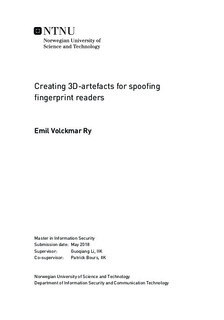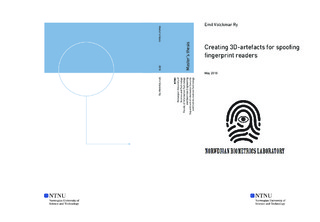| dc.description.abstract | In this thesis we assess the different challenges of making 3d printed artefacts with 1.75mm PLA
filaments. In this thesis we have been able to verify knowledge already in the body of knowledge
such as the impact of colour of artefacts in artefacts for touch less optical sensors. We have been
able to highlight the need for both conductivity and flexibility in artefacts generated for conductive
sensing arrays. This is highlighted by the force that is required to get a reasonable imprint on a
conductive sensory device. Where force is not applied, the fingerprint looks weak or not visible.
From the state-of-the-art we know that flexibility would most likely help with this, since this allows
for "yield" in the finger which spreads the pressure.
Besides being able to confirm findings which the state-of-the-art also reports, we have been able to
get a positive similarity score in a direct comparison of a source image versus an produced artefact
using a touch less optical sensor. This means achieving the appropriate levels of details in the artefact. This allows us to claim that achieving a satisfactory level of detail can easily be done on more
affordable and less accurate 3d printing machines than that of the ones used in the current stateof-the-art. This has also been one of the main motivational points for this research. We were also
able to generate similarity scores which show that our generated artefacts are showed as genuine
by a commercial comparator. We have also been able to enrol an artefact on a mobile phone sensor,
unlocking it with the same device afterwards. While being able to unlock phones with an artefact,
we are not able to generate a conductive artefact which has interoperability with a real finger.
Our preliminary research show enhancement significantly improves similarity scores and allows
for interoperability within the same subject. To further confirm such a claim it will most likely need
to be further explored using a larger sample size. We are able to investigate interoperability between artefacts and other sample captures finding that the artefacts which has had enhancement
has a higher average score within the sample size(120) than that of the raw source image artefact(50). | |

